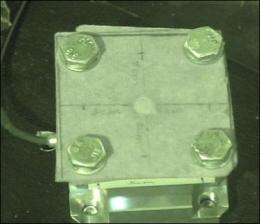The science of hammering

Scientists are studying hammering ability as a model for difficult motor tasks. The results, to be presented on Sunday, June 28, at the Society for Experimental Biology meeting, indicate that there is a surprising difference in performance between the sexes, and that this difference is dependent in turn on the hammering conditions.
When it comes to something as simple as hammering a nail, some people are naturals and get the job done after a few clean, sharp strokes of the hammer, whereas for the rest of us a similar challenge is likely to end up with the nail bent in the middle, a sore thumb and a wounded pride.
Dr. Duncan Irschick and his colleagues at the University of Massachusetts at Amherst have measured hammering performance in men and women and found that men are more accurate than women when hammering under light deprivation, and, conversely, women are more accurate in the light, regardless of target size.
"We believe that our research indicates that humans have remarkable compensatory ability during difficult motor tasks such as hammering in the dark", says Dr Irschick, who in future studies is planning to focus on understanding how hammering ability evolves in humans from early development to adulthood.
Dr Irschick will present his findings at the Society of Experimental Biology Annual Meeting in Glasgow on Sunday 28th June 2009.
Source: Society for Experimental Biology
















